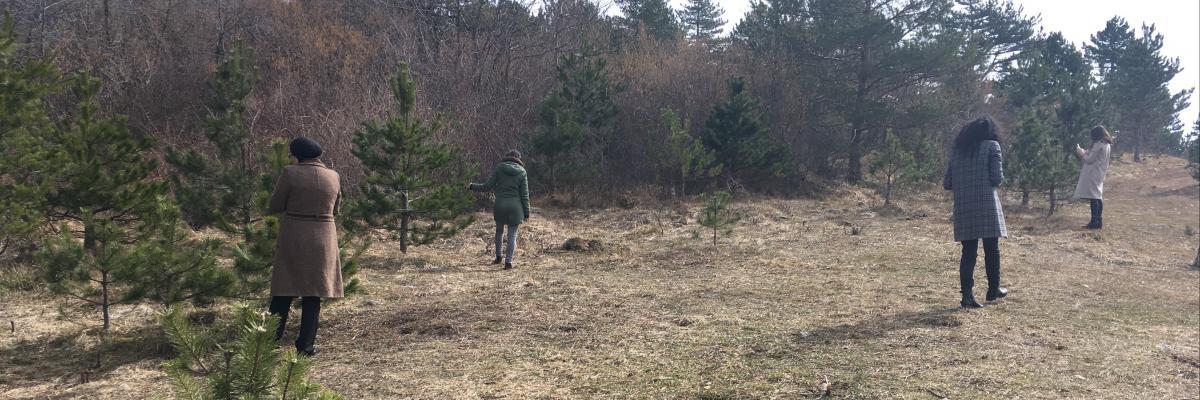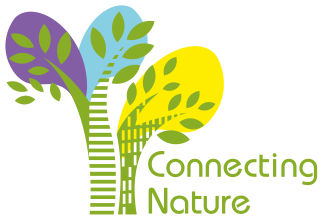
The Sarajevo Process (Pilot) is a co-creative arts-based engagement approach that has been developed by Connecting Nature partners in Trinity College Dublin and University of East London, in collaboration with cities. The process draws on our memories, places us in nature and captures our embodied experiences to help us tell our stories with/in nature.
 Background
Background
As human beings, we are drawn to stories; they help us to communicate and share experiences. They connect us – to our families, our communities, and to the places in which we live. With and in them, stories provide us the means to create meaning; by drawing on the tools of language, symbol, pace, rhythm, we create a foundation for telling the world what is important to us, what matters. Stories give shape to living; they draw on our memories, capture our present, and give us means to imagine our future.
The past, the present and the future provide us with the frame or lens through which we can better explore our relationship with nature; in this way, they have become the anchors of our methodology – asking the following questions:
- What has brought you here?
- Where is here/what does ‘here’ mean?
- Where are you going/how do you get there?
Overview of methods
To answer these questions, our methodological process is composed of the following elements:
-
Memory-work is a social constructionist and feminist research method that was developed to bridge the gap between theory and experience; it is a group method involving the collective analysis of individual memories. Memory is something that “lives within our bodies; our memories are our bodies and our bodies are our memories. Memory is all that we are” (Swinson, 2014). This is echoed by Juhani Pallasma, who notes that ‘human memory is embodied, skeletal and muscular in its essence, not merely cerebral’.
- Immersion in Nature and Embodied Reflection: provide a way of understanding the body as a filter between nature and ourselves. The body's senses have the power to establish relationships with our surroundings, as well as trigger memory. The conscious reflection on these experiences can reveal well-known spaces in new light, while creating bonds with people who share the experience with us.
- Eco-therapy practices: framing the exercise around nature provides a ‘soft’ opening for participants to share experiences. Nature has been proven to be good for our mental health and wellbeing and eco-therapy practices can be used as positive psychological interventions.
- Body Mapping: a process for capturing individuals’ lived experiences and stories, it originated in South Africa to counteract the stigma and fear by recognizing personal stories of living with HIV. According to Brett-MacLean (2009), body mapping offers both a metaphor and means of recognizing the fluid tracings of the personal, social, geographical, political and emotional experience.
“We could all find bits of ourselves with the stories. We identify similarities across all stories. Even though they are different…”
– workshop participant, reflecting on the memory work exercise.
“Being in nature is completely relaxing. That is the pleace where I feel like I belong, that I am a part of the universe and that the universe is a part of me. According to that, I painted the drawing with the following colors...the yellow lines represent the sun's rays. As I stood completely relaxed for a few minutes, I absorbed all the energy that the sun emits. Since for a past few days there was no sun at all, I felt joy and happiness, and I was grateful for this energy. Fresh air is the need of every human being. The blue lines represent a breeze, it was delightful feeling...As we walked around, I saw the branches that were cut off and on the other side there were saplings. It reminded me on the cycle of life...In the end I saw horse feces, which made me happy, because it symbolizes life. There is a wild horse habitat. The feces are natural fertilizer, so it fits perfectly into this image of nature“
– workshop participant, reflecting on immersion in nature/ecotherapy and body-mapping exercises.
Next Steps
To date, we have worked with our colleagues in Sarajevo (SERDA and City of Sarajevo officials) to test and refine the elements of the process; coming up in the Autumn, we will be working with Nicosia and A Coruna, as well as other Connecting Nature cities to further test the process as a means to help capture the stories of nature in cities, and to work together to build shared experiences and stories, as we work with the Connecting Nature Framework to support NBS design and implementation.
It is envisioned that the final version of The Sarajevo Process (Pilot) will enable key stakeholders in cities to:
1) tell the story of nature/NBS in their cities
2) engage with citizens to tell their stories, and to use these stories to help frame the co-creation process for NBS
3) design NBS to address a particular challenge in a city (in this context, one element of the process is helping stakeholders identify the goals, priorities of their NBS; these can then be ‘fed’ into the Connecting Nature process and help in establishing indicators, selecting the technical solution, and support both the co-creative and reflexive monitoring elements of the framework.
Drafted by:
Dimitra Xidous, Research Fellow, Trinity College Dublin
Paula Vandergert, Senior Research Fellow, University of East London
Paulina Georgiou, Research Assistant, University of East London
